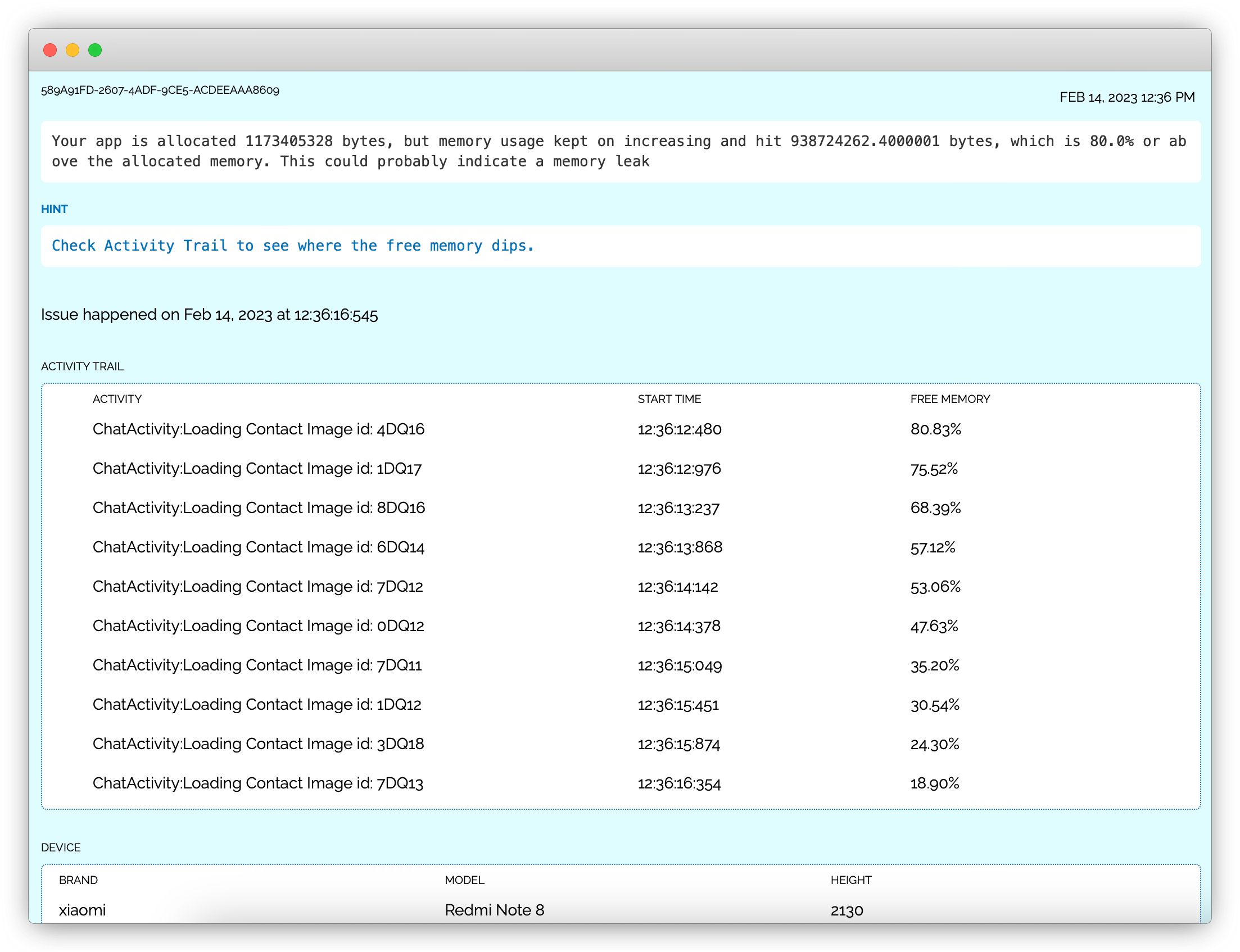Detecting and fixing Abnormal Memory Usage in Android apps.

What is Abnormal Memory Usage in Android apps?
High memory usage in Android applications can lead to performance issues and poor user experience. Understanding the common causes of high memory usage can help developers optimize their apps for better performance. Here are three major reasons for high memory usage in Android applications:
Reasons for Abnormal Memory Usage in Android apps
- Large images or media files: Images or media files that are too large can consume a significant amount of memory, causing the app to slow down or crash. Developers should optimize their images and media files by using proper file formats, compressing them, and utilizing efficient loading techniques. For example, they can use image libraries like Glide or Picasso to load images efficiently and handle caching.
- Inefficient memory management: Apps that do not manage memory efficiently can cause memory usage to skyrocket, leading to performance issues. Developers should follow best practices for memory management, such as using appropriate data structures, releasing resources when they are no longer needed, and avoiding memory leaks. They should also profile their applications using tools like Android Studio's Memory Profiler to detect and fix memory-related issues.
- Too many background processes: Apps that run too many background processes can use up a lot of memory, causing the device to slow down. Developers should minimize the impact of background processes by ensuring they only run when necessary, using efficient algorithms, and limiting the number of processes running simultaneously. They can also take advantage of Android's JobScheduler or WorkManager APIs to schedule background tasks efficiently and avoid running too many tasks at once.
By addressing these issues, developers can significantly reduce the memory usage of their Android applications, leading to better performance and user experience.How do we use the information in the screenshot to fix Abnormal Memory Usage in Android apps?
Issue report provides the activity name along with the activity trail, which is a chronologically ordered list of events that occurred prior to the issue. This includes the memory used by the app at each event. Developers can use this information to isolate the area or activity that is causing the increase in memory usage.

